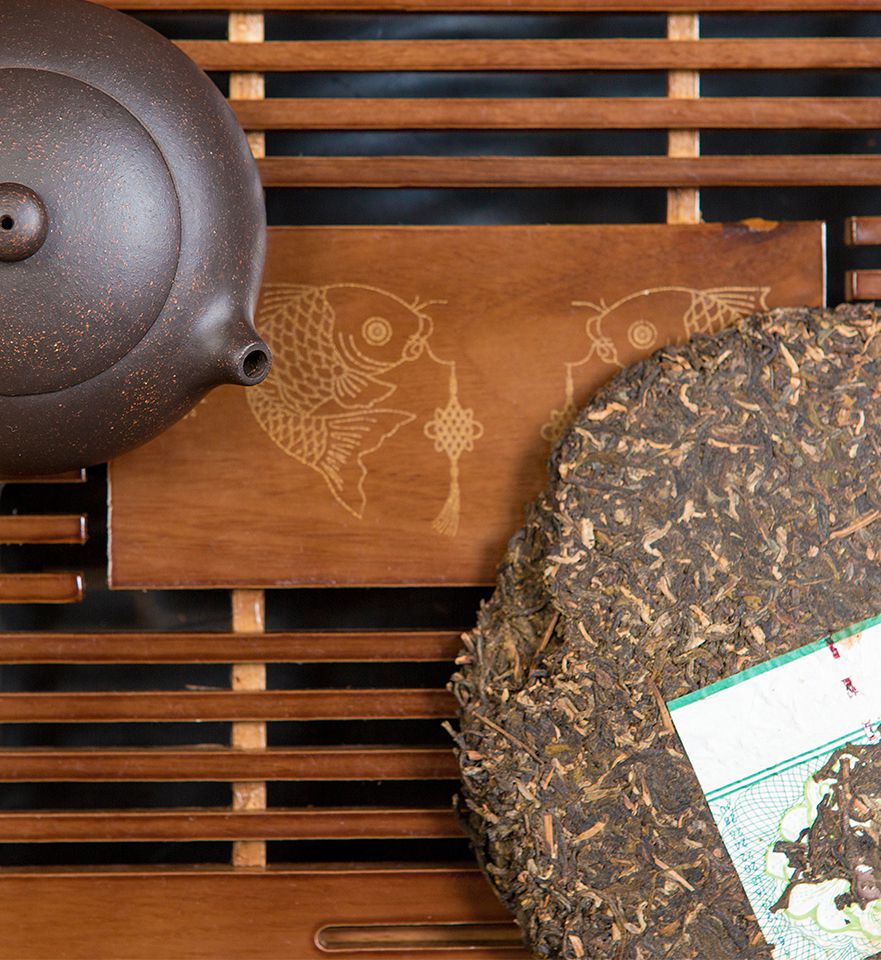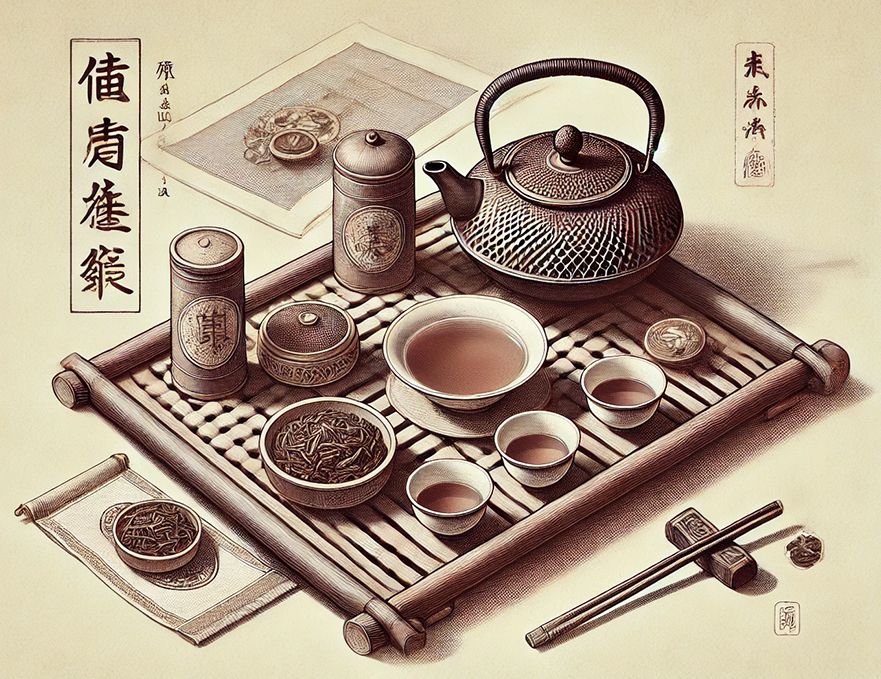Pu Erh Mini Tuo Cha pressed into small bird's nest shapes
Discover our other teas:
Dive into the mysterious world of pu-erh tea, this dark beverage with ancient Chinese origins. Sourced from century-old tea trees in Yunnan, this fermented tea improves with age, like a fine wine. Its twisted tea leaves release a powerful aromatic bouquet when brewed, with notes of wood and leather. Renowned for its beneficial properties, pu-erh tea is an ally to your health, recognized for its effects on digestion and cholesterol levels. Discover the secrets of this exceptional tea, from its traditional production in cakes or loose leaf to its tasting according to the gong fu cha method. Let yourself be transported by this unique taste experience, where each cup offers a sensory journey to the heart of China.

Pu Erh tea, originating from the Yunnan province in China, is a post-fermented tea with unique characteristics that fascinates enthusiasts worldwide. Made from Camellia sinensis var. assamica, this dark tea stands out for its distinctive manufacturing process, its virtues, and its ability to improve with age.
Known for its complex taste and olfactory richness, Pu Erh offers an intense tasting experience, often evoking notes of wood, damp earth or leather. Its color, which varies from dark red to deep black, testifies to its unique fermentation process, which can last from a few months to several decades.
Green Pu Erh, also called Sheng Cha, is a raw tea that undergoes slow fermentation over the years. Initially similar to a compressed green tea, it gradually transforms, developing increasingly complex aromas and a color that darkens with time. Enthusiasts particularly enjoy following the evolution of these teas, which can be stored for decades.
Dark Pu Erh, or Shu Cha, undergoes accelerated fermentation that quickly gives it its black tea characteristics. Developed in the 1970s to imitate the taste of aged Sheng Pu Erh, Shu Pu Erh undergoes a controlled transformation process called "wo dui" that can last 45 to 60 days. Its dark red liquor and rich fragrance, often evoking notes of earth, mushrooms, or forest floor, make it a tea appreciated by lovers of strong and comforting flavors.

Rich in powerful antioxidants, particularly polyphenols and catechins, Pu Erh is known for its many virtues. These compounds help fight oxidative stress, thus contributing to the body's overall well-being. Studies have shown that regular consumption of Pu Erh tea may have beneficial effects on cardiovascular health and the immune system.
Traditionally used in Chinese medicine, Pu Erh is renowned for aiding digestion and promoting weight loss. It is said to help reduce cholesterol levels and eliminate fats, making it an ally in a balanced diet. Some studies suggest that Pu Erh tea may help regulate lipid metabolism and improve body composition. Additionally, Pu Erh is often consumed after heavy or fatty meals, as it is believed to aid in digestion. Although its caffeine content is generally lower than other teas, it remains a mild stimulant that can help boost metabolism.
Loose Pu Erh offers great flexibility in preparation and allows you to appreciate the twisted shape of the leaves. It's often in this form that you find Mao Cha, the raw tea used to produce compressed Pu Erh.
Pu Erh cakes, called "Bing Cha", are the most common form. Generally round in shape and weighing about 357g (which corresponds to an ancient Chinese weight system), these cakes are ideal for long-term storage and controlled aging.
Tuo Cha are small compressed portions, often nest or bowl-shaped, typically weighing between 3g and 250g.
The aromatic bouquet of Pu Erh is remarkably rich and complex, varying considerably depending on the age, origin, and production method of the tea. Here's an overview of the main nuances you might encounter:
Some Pu Erh can also present more specific scents such as:
There are also scented Pu Erh teas, particularly with chrysanthemum or jasmine flowers, offering an even more diverse palette. The tasting experience of a Pu Erh is often described as a sensory journey, where aromas evolve not only over the years but also during successive infusions in the same tasting session.
To choose an excellent Pu Erh, several criteria should be taken into account:
The technique called gong fu cha is a true art that allows you to fully appreciate the subtleties of Pu Erh:
This method allows for numerous infusions (sometimes up to 20 or more), each revealing new nuances.
For a quicker preparation adapted to daily life:
Even with this simplified method, Pu Erh can generally withstand multiple infusions. Don't hesitate to reuse the leaves to discover how the taste evolves.